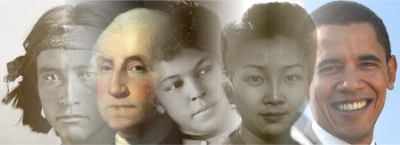The Bronzeville Age
Black Chicago in the First Half of the Twentieth Century
by Hilary Mac Austin and Kathleen Thompson
It was not just about Louis Armstrong, Gwendolyn Brooks and Ida B. Wells. Or Richard Wright, Katherine Dunham, Earl “Fatha” Hines, Lil Hardin, and Chess Records. It wasn't just Muddy Waters, Elijah Muhammad, and Canada Lee. It went beyond Chicago blues and the first African American to win the Pulitzer Prize. The Chicago Defender and Provident Hospital--where black surgeon Daniel Hale Williams performed the first open-heart surgery in history--were at its core, but the real story is much bigger and far more fascinating. What happened in Chicago over a period of a few decades was the creation of a thriving African American community, successful in every meaningful way. It even produced a musical, literary, and artistic flowering that rivals in significance–and perhaps surpasses--the Harlem Renaissance, although it has, until recently, been given short shrift by historians and critics. When Arna Bontemps compared the Chicago cultural scene with the Harlem Renaissance, he said it was "without finger bowls but with increased power."
There have been many important migrations within the boundaries of the United States. The most significant was probably the movement west, with its dramatic, often tragic clash of European, Native American, and Hispanic peoples. What resulted was the frontier culture that merged elements from all these traditions and has often defined America for the rest of the world–the American West. Hardly less significant was the movement north of African Americans in the early years of the twentieth century, the Great Migration. What resulted from that movement was a cultural confluence that has profoundly shaped American music, dance, religion, food, and popular culture and changed the urban environment in ways we are still trying to understand. As enslaved people had brought Africa into the South, black migrants now brought the South into the rest of the United States.
About a million and a half African Americans left the South between 1915 and 1930 to move to the urban centers of the North. Between 50,000 and 75,000 of them ended up in Chicago, with tens of thousands more to come in the early 1940s. They joined a black community that began with Jean Baptiste Point Du Sable’s trading post and had steadily grown since the 1840s. It really began to gain coherence in the 1890s, after the Columbian Exposition of 1893. The Chicago Defender campaigned to bring workers from the Jim Crow South. The building of Provident Hospital in 1896 attracted affluent African Americans who wanted to be near good medical care and knew they would not find it in makeshifts wards in the basements of white hospitals.
By the teens of the new century, the Eighth Regiment Armory, Unity Hall, and the Wabash YWCA were all built a few blocks from Provident, now at 36th and State. Ida B. Wells-Barnett and her husband, attorney Frederick Barnett, were a mile east, on what is now Martin Luther King Drive, as were many others of the growing black elite. The Pilgrim Baptist Church occupied a large and beautiful former synagogue on Indiana, near 33rd. The twenties saw the the Overton Hygienic Building, the Supreme Life Building, and a big, new home for the Chicago Defender, all in the downtown area of what was beginning to be called Bronzeville.
In 1930, one third of all the banking assets of African Americans in the United States were held by two black-owned Bronzeville banks. Beauty entrepreneur Annie Turnbo Malone chose Chicago as the site of one of her two beauty colleges, and Madame C. J. Walker opened a branch of her training school in Bronzeville as well.
The Grand Terrace Ballroom opened in 1921 as the Sunset Cafe and soon rivaled Harlem’s Cotton Club. Controlled by Al Capone, the club featured great jazz musicians and beautiful young black women. It was one of dozens of clubs in Bronzeville, some of them open to white customers only but most of them at the heart of the black community’s dazzling nightlife. These clubs were the performing home of the greatest blues and jazz musicians in the world, from Bessie Smith to Charlie Parker. In the 1920s, Okeh Records opened a Chicago studio to record jazz, blues and gospel–because that was where the musicians were.
In the churches of Bronzeville, gospel music was born. Thomas Dorsey and Sallie Martin, at Pilgrim Baptist, created the style and substance of the new form during the 1930s and 1940s, along with Willie Mae Ford Smith, Mahalia Jackson, Dorothy Simmons, Kenneth Morris, and Robert Martin.
At the Parkway Community House, Gwendolyn Brooks, whose first book was A Street in Bronzeville and who won the Pulitzer Prize for Poetry for her second book, Annie Allen, and Margaret Walker, whose “For My People” became a theme song of the civil rights movement, both got their early training and encouragement. Gordon Parks had one of his first photography exhibits there, at the opening of a Langston Hughes play.
Out of the Federal Writers Project came novelist Richard Wright, author of Native Son and Black Boy; Frank Yerby, the first best-selling black writer; Willard Motley, author of Let No Man Write My Epitaph; and dozens of others. Strikingly, they worked alongside such white writers as Saul Bellow, Nelson Algren, and Jack Conroy, often on projects that involved black history and community.
All of this stunning cultural activity came out of an area that was not much more than two square miles at its largest and had a population density of 70,000 people per square mile, greater than that of modern-day Manhattan with all its skyscrapers. Restrictive covenants and racist violence, like the terrible riots of 1919, held the boundaries of Bronzeville tight, while African Americans in search of hope poured in. Within those boundaries, black political power and the seeds of activism grew as well. It was an extraordinary place and an extraordinary time.

